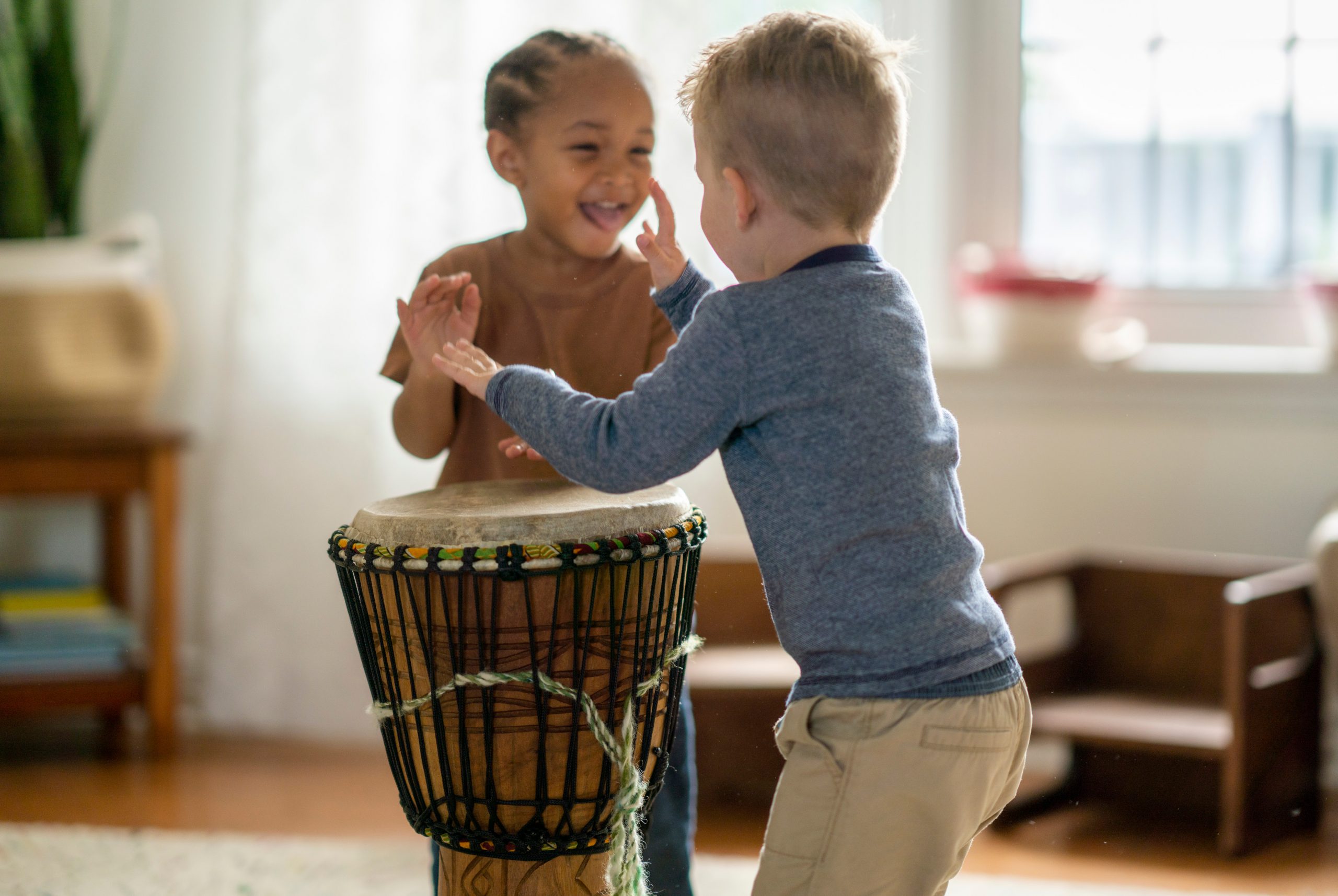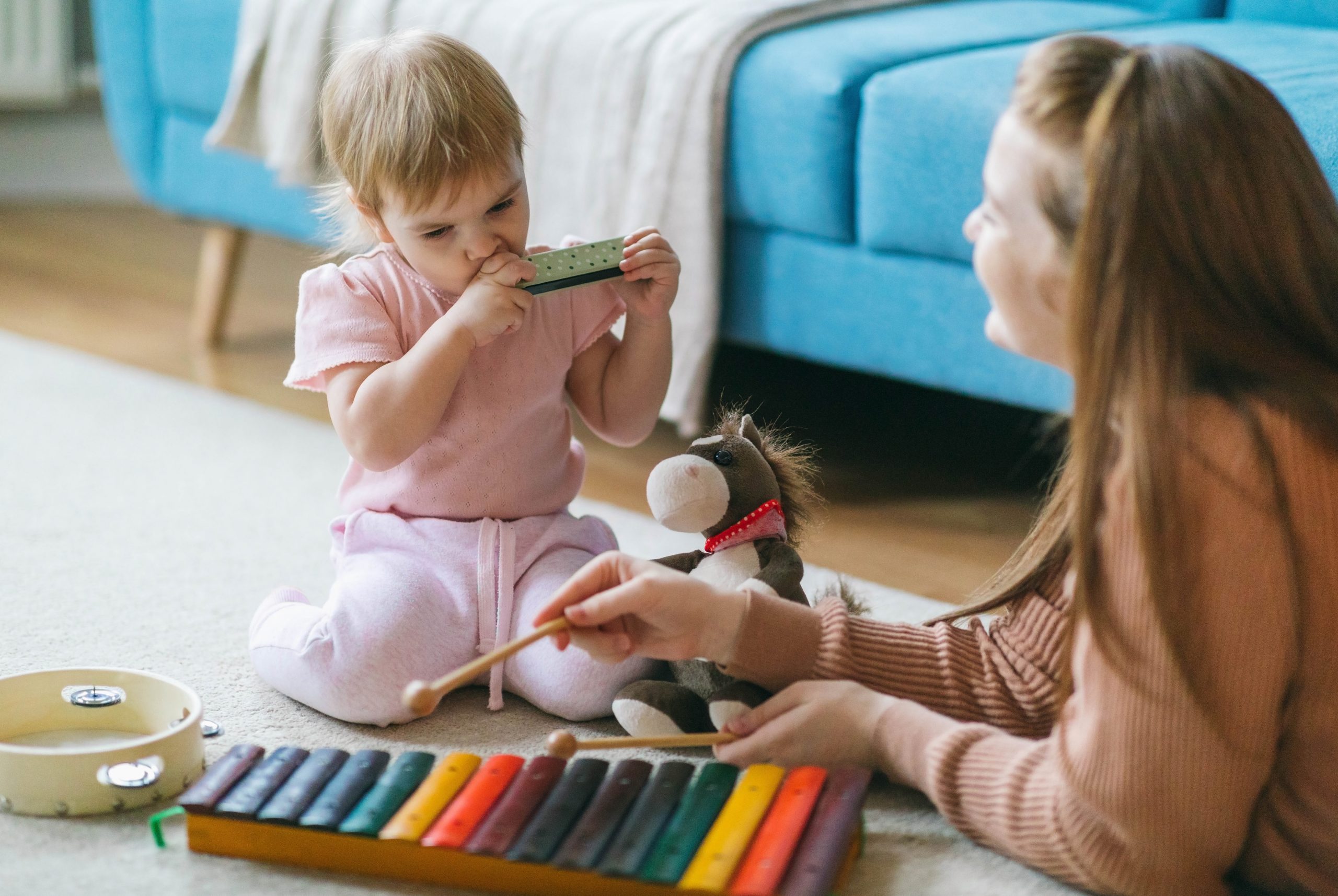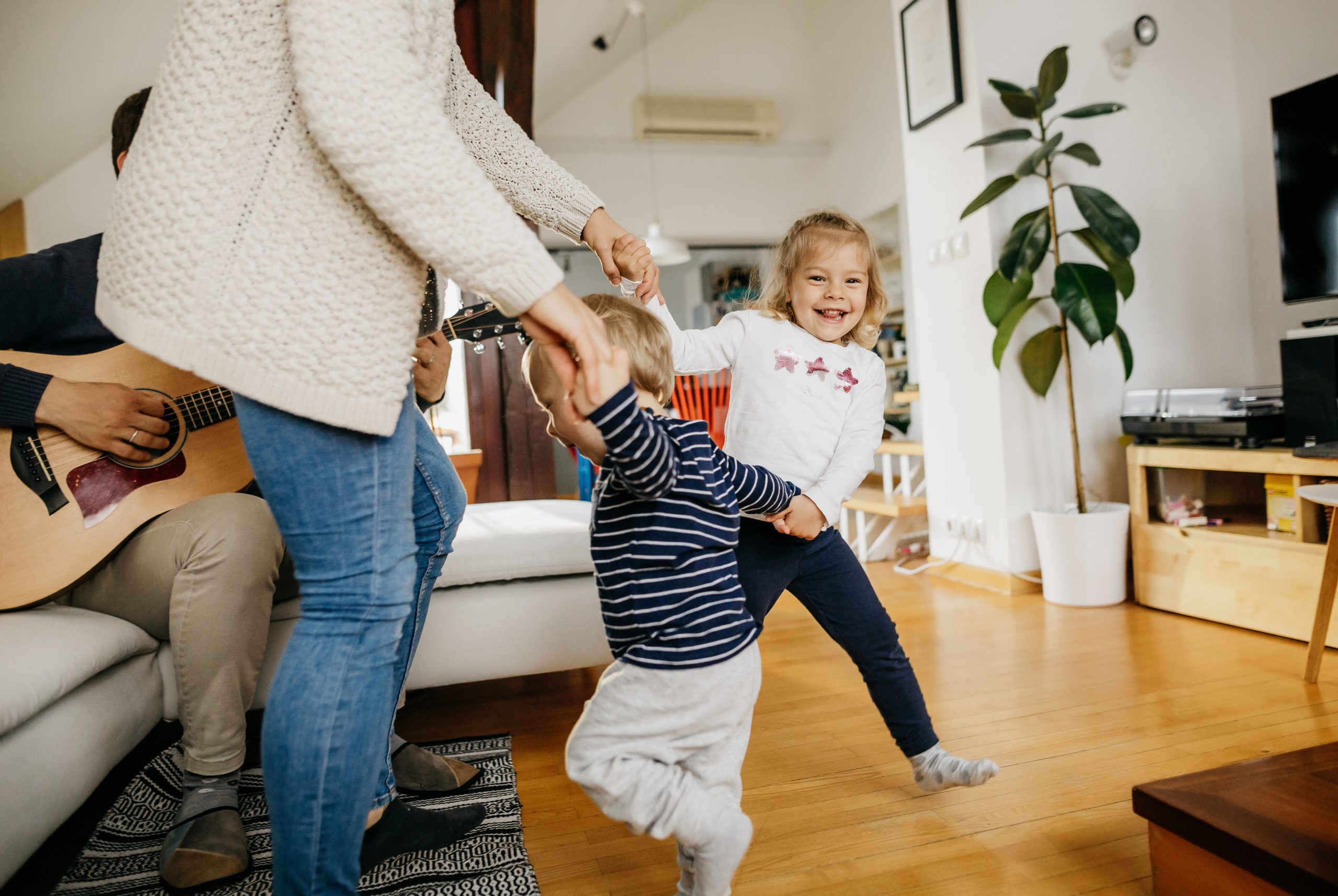
Let’s Get Musical: Incorporating Music in the Classroom and Home
Whether your child will become the next Mozart or strictly stick to banging pots and pans around the house, music can be an excellent aid in their development. Music-related activities help children develop fine motor skills, improve language development, increase the neural activity within their brain, and help them to understand how different objects go together. With all these reasons and more, music can be an integral part of a child’s early education.
Benefits of music in early childhood development
While encouraging children to sing “Sweet Home Alabama” won’t make them smarter, researchers have found a direct link between language development and learning music. According to the Children’s Music Workshop, recent studies have clearly indicated that musical training physically develops the part of the left side of the brain known to be involved with processing language, and can actually wire the brain’s circuits in specific ways. Linking familiar songs to new information can also help imprint information on young minds.

Making music can also help to connect brain and body movement. When a child claps their hands or stomps their feet to a song, they understand that their movements are making noises. Creating that understanding through a fun activity like music listening will not only help their brain to body movement but also their fine and large motor skills. While these things seem so simple, they help build important connections throughout many parts of the brain.
Children also learn how to express their emotions during these early years. While children sometimes have a hard time getting their emotions out, creating songs or games can help them to understand how to show someone what they are feeling. They can start to learn that a slower tempo usually means sadness, while an upbeat, fast tempo correlates with happiness or joy.

Tips for incorporating music into your home and classroom
There’s a whole spectrum of music-related activities, from simply listening to creating music. Following these tips can help turn any classroom or home into the School of Rock!
Let children make their own instruments! If you allow children some freedom, they will surprise you with how ambitious they are. Here’s an example of an easy DIY musical instrument:
Bell bracelets
- Gather medium to large craft bells and pipe cleaners. Make sure the bell size does not present a choking hazard for young children.
- Help children thread the bells through the pipe cleaners.
- Twist the pipe cleaners ends together.
- Now the children have tambourines to shake with their hands or wear on their arms!
Allow children to move their bodies while listening to music. If you show them how to move slower during a down-tempo passage and faster during an up-tempo passage, it will help them to understand how the brain and body are working together.
Another great idea is to have the children sit in a circle, each with an instrument in front of them. Let them take turns being the leader and creating their own beat. Once they have created their beat, have the other children try to mimic that beat. This helps children understand that different instruments make many different sounds.

Interested in other ways to boost quality?
Many child care providers already have music in their curriculum, but we hope these tips give you ideas for new, fun ways to step it up a notch. If you’re ready to learn other ways to boost the quality of your care, Step Up to Quality helps great child care providers become even better. If you’re a parent who’s on the search for providers who are committed to quality care, check out our search tool to find options near you.
